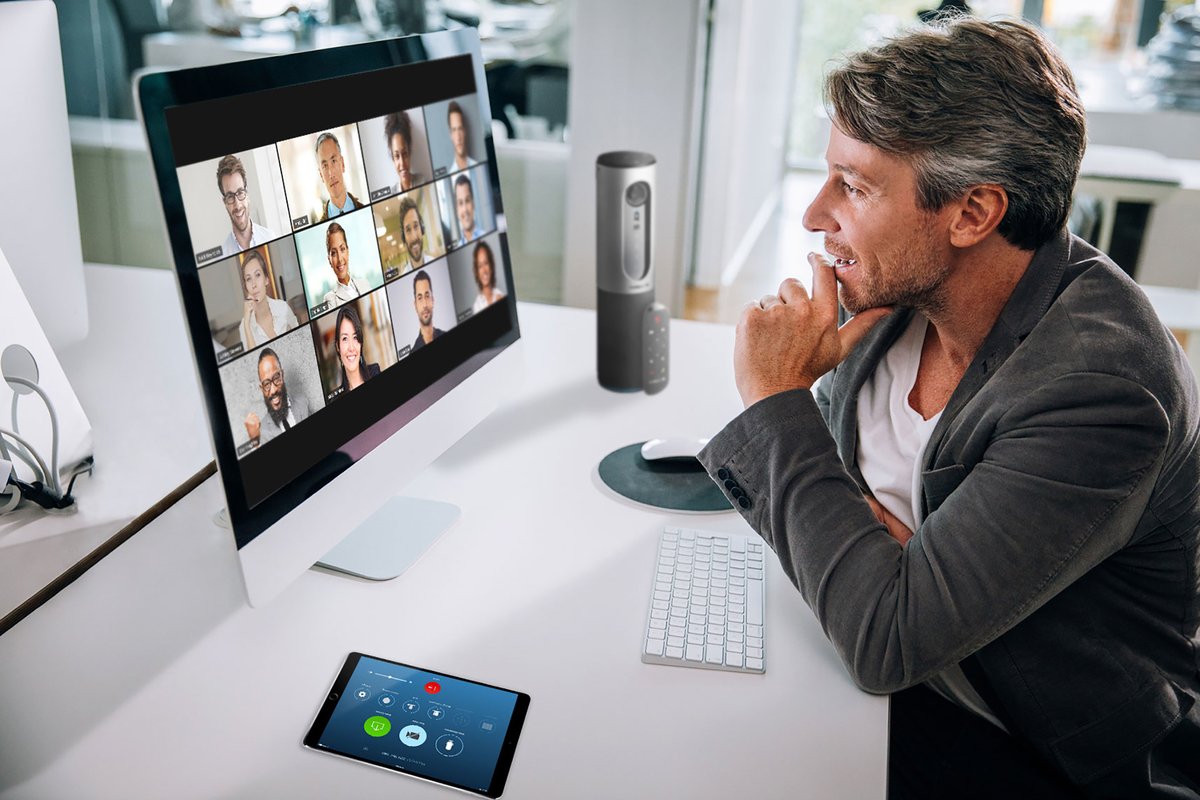If you’ve worked for a typical corporate enterprise at any time in the last ten years you’ve probably experienced group collaboration on a project.
Recently however, the process has changed in some significant ways. Instead of that discussion happening in an office conference room, we now use team chat, video conferencing and online meetings to prepare.
While these may seem like only incremental technical changes to our tools, they actually represent much more than that. These changes represent a bridge to the world – reducing costs, improving the quality of life and increasing productivity – and that world gets a little smaller in the process.
Assembly has had over a decade of experience delivering successful business outcomes in collaboration technology. In our latest interview with Assembly’s MD, Peter Smith; and Technical Director, James Reilly, we look at how video conferencing solutions are changing business and the way we work.
1. What video conferencing services does Assembly offer?
Peter: “ZOOM, GoToMeeting, Microsoft Teams.”
2. Describe some of the features of these services.
Peter: “All our solutions are easy to use and intuitive with fuss free set up. Our GoToMeeting application is provided with an enhanced voice clarity by virtue of the world-renowned Dolby Laboratories creating an elevated conference room experience.”
James: “Depending on the specific service you decide upon, features include (though are not limited to) –
- Full PBX functionality for every user
- Inclusive calls to 52 countries
- Webinar functionality
- Educational packages for virtual classrooms
- Calls to UK mobiles included as standard
3. How long have you been specialising in video conferencing?
Peter: “Over 10 years now.”
4. How do these differ from/offer more than other options on the market, e.g. Zoom?
Peter: “Zoom is an excellent product, but we design and build our solutions to suit our customers with criteria based upon suitability, operational practicability and commercial considerations.”
James: “Each product we offer has its beneficial features, but what we do at Assembly is provide the consultation to determine which product has the features most beneficial to you.”
5. What value can you add for customers, particularly at the moment?
Peter: “Support that is exceptional. We guide our customers through their selection choice, deploy, then train, as no organisation is the same.”
James: “We’re really proud of our customer service values above all else, we’ve even won awards for it. It is important to us that our customers know that they come first and this is an ethos instilled throughout our team.”
6. Which types of companies or individuals would really benefit from using Assembly Managed Services video conferencing services?
Peter: “Any company that has home working or remote employees, multi site organisations and companies wishing to meet with their own suppliers and customers with enhanced communication.”
James: “The only thing I’d add to that are schools and colleges. We have products that have educational-focused webinar services, allowing teachers to hold a virtual class for remote students without the need for a physical classroom.”
7. What are some of your favourite features of video conferencing yourself?
Peter: “Collaboration / Screen Sharing, and the basic ability to visually connect with people without the need for extensive travel.”
James: “Click & play, and bespoke background scenery to personalise and brand your screen.”
8. Can you tell me a bit more about the difference between Unified Comms and VoIP? Who might each option best suit?
Peter: “Well, VoIP is a generalised term that tends to refer to (though not exclusively) modern Cloud telephony solutions. So, replacing the old style on premise telephones and using a good Internet service as a medium. Unified Comms (or UC) is an application that involves voice telephony, secure messaging and video collaboration. The user communication experience is instantly enhanced when a video call is used. Facial expression accounts for an important aspect to communication and messages get understood easier with barriers being broken down when a face-to-face video call is made.”
9. Where do you see the future of video conferencing going, especially in light of Covid-19?
Peter: “Our take up has been astounding. We have seen exponential growth on account of the Covid 19 crisis. Post crisis, companies will continue to use the positive experience they have had enjoyed with video conferencing.”
James: “I truly believe that business will be changed forever because of the recent crisis. People have had no choice but to work remotely, and it has largely been proven to be successful. There is less of a need for large expensive physical premises and why drive 100’s of miles or jump on a plane to meet when its so easy to video conference. People are also more confident in being on camera as a result of the necessity to do so during 2020, to the point that it sometimes feels odd not to have a video call in favour of just voice. I think we will see some long-term changes in the way people meetup moving forwards.”
10. If a customer doesn’t choose to work with Assembly, what are their other options or popular alternatives?
Peter: “They can try working with the application providers directly but when you try to call for support that’s where customers can get deflated and the whole experience can prove disappointing and frustrating. Our harmonious overlay of support in the initial design and implementation ensures they are getting the right product for their needs and we are here 24×7 to support them when we are needed, before, during and after deployment.”
11. What is the consequence of inaction? If businesses don’t invest in their video conferencing software/platform what problems might they face?
Peter: “Unquestionably, companies have embraced new technology as and when circumstances require it. Video Conferencing is now a necessity, not a ‘nice to have’ tool, and if organisations are to compete in their market place that will no doubt be tougher now than pre-Covid19.”
James: “Let’s look at a scenario where your client is wanting to meet with you, yet would prefer not to travel. In a world where video conferencing has become so prevalent if you don’t have the ability to offer them a video call, or you have to use a consumer app such as WhatsApp or Facetime to achieve it, how is your business going to be perceived?”
Talk to one of our specialists today to learn more about our remote working capabilities; how we’re bringing people, business and technology together; and what this means for you.






